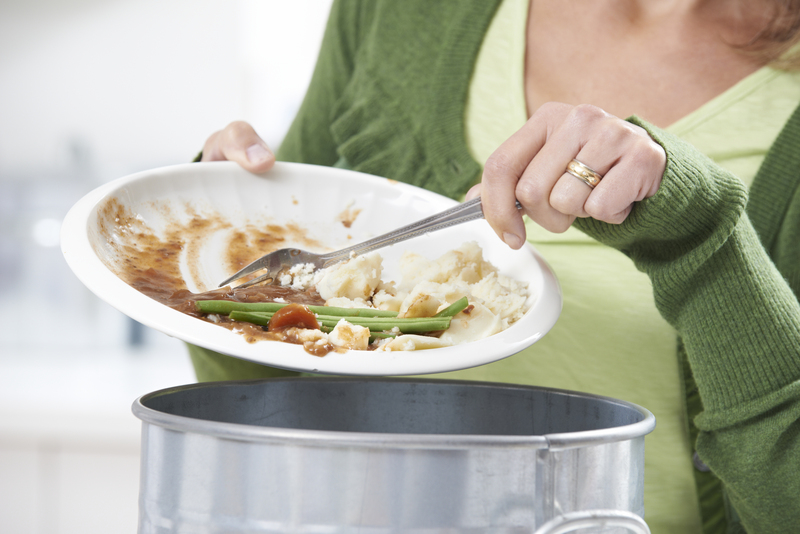From Use to Trash: The Responsible Way to Dispose of PPE
Personal Protective Equipment (PPE) has become an essential part of our daily lives, especially following the global health crises that have made masks, gloves, gowns, and face shields commonplace. They are invaluable for protecting individuals against infectious diseases and hazardous substances. However, with their widespread use comes an important and often overlooked question: what is the right way to dispose of PPE?
Improper PPE waste management not only poses environmental risks but also health hazards to humans and wildlife. Understanding the responsible methods of disposal is crucial for minimizing these risks and ensuring a safer environment for all. In this comprehensive guide, we'll delve into effective strategies for safe and responsible PPE disposal, examine its environmental impacts, and share practical tips for individuals and organizations alike.

Why Responsible PPE Disposal Matters
The use of disposal masks, gloves, and other PPE items has surged dramatically in recent years. Let's look at the reasons why it's vital to dispose of personal protective gear thoughtfully:
- Environmental Protection: PPE waste, if not handled appropriately, can contribute to land and marine pollution.
- Public Health: Infectious PPE can spread bacteria and viruses if not properly contained and disposed of.
- Wildlife Safety: Animals may ingest or become entangled in discarded PPE, leading to injury or death.
- Waste Management Efficiency: Appropriate segregation and disposal help keep waste streams manageable and prevent contamination.
The Risks of Improper PPE Disposal
During the COVID-19 pandemic alone, billions of disposable masks were used worldwide each month, many of which ultimately ended up in landfills, waterways, and even the oceans. If handled incorrectly, this kind of waste can:
- Clog sewage systems
- Leach microplastics into the soil and water
- Become a vector for disease transmission
- Increase the burden on municipal waste management systems
Clearly, responsible PPE waste management is not just a personal choice, but a global imperative.
Types of PPE & Their Environmental Impact
Before discussing how to safely dispose of PPE, let's identify the most commonly used types and the specific environmental concerns they present:
- Masks: Typically made of polypropylene, a type of plastic. Non-biodegradable, and a major source of microplastic pollution.
- Gloves: Made from latex, nitrile, or vinyl. While latex is technically biodegradable, most commercial latex gloves are mixed with non-biodegradable additives. Nitrile and vinyl are plastics that persist in nature for decades.
- Gowns and Aprons: Often constructed from polyethylene or polypropylene; both are plastics with long degradation times.
- Face Shields: Generally made from polycarbonate or PET plastic, both of which are durable but not commonly recycled household items.
Without proper disposal, these materials can persist in our environment for many years, causing significant ecological harm.
Guidelines for the Responsible Disposal of PPE
1. Understand Local Regulations
Waste management rules differ significantly across cities and countries. It's important to check with local authorities or waste management agencies to determine:
- Whether used PPE should be disposed of in regular household waste or as medical waste
- If special drop-off points or collection services are available
- The existence of any PPE recycling programs
Often, general use PPE (like masks and gloves used in public) can be disposed of in regular trash, while PPE from healthcare or quarantine settings may require hazardous waste treatment.
2. Safe Handling Before Disposal
- Always wash or sanitize your hands before and after touching used PPE.
- Avoid touching the outer surface of a mask or gloves that have been used.
- Do not throw used PPE directly onto the ground or public spaces.
For extra safety, especially during outbreaks, it is advisable to place used PPE in a sealed bag before putting it in the trash. This helps prevent potential contamination and the spread of pathogens to sanitation workers.
3. Segregation at Source
Segregating PPE waste from regular waste is a key step in responsible disposal:
- Use a dedicated bin or bag for PPE items. Label it clearly to distinguish it from recyclable or compostable material.
- Never throw used PPE into recycling bins. PPE is not recyclable through standard household recycling.
- If available, use bins designated for non-recyclable or hazardous waste.
Segregation protects waste handlers and makes collection and treatment more efficient.
4. Special Disposal for Healthcare Settings
- Hospitals, clinics, and testing centers must abide by medical waste protocols.
- PPE from these environments is considered infectious waste and should be placed in red or yellow biohazard bags, then incinerated or processed according to local law.
Never attempt to dispose of hospital or diagnostic PPE with household trash--it can pose a serious infection risk!
5. Avoid Burning or Flushing
Never burn PPE or flush it down toilets or drains. Burning releases toxic fumes, and flushing causes pipe blockages and directly pollutes waterways with plastics.
6. Consider Reusable PPE Options
- Use reusable fabric masks and washable gowns whenever possible.
- Follow advised sanitization procedures to maintain their integrity and protective properties.
Switching to reusable PPE can greatly reduce the volume of waste generated.
Innovative Solutions: The Future of PPE Disposal
The surge in PPE waste has led to creative solutions and innovations:
- PPE Recycling Programs: New initiatives in some regions collect used PPE and convert it into construction materials or fuel.
- Biodegradable PPE: Research is ongoing to create masks and gloves from plant-based materials that break down safely in the environment.
- Drop-Off Points: Some supermarkets, pharmacies, and public spaces have introduced specific bins for responsible PPE collection.
- Incineration with Energy Recovery: Advanced facilities can incinerate PPE at high temperatures, safely destroying pathogens and generating energy from waste.
Participation in local PPE collection or recycling initiatives is one of the most effective ways individuals can contribute to sustainable disposal.
How Individuals Can Make a Difference
While systemic solutions are essential, individual behaviors play a substantial role. Here are some ways you can be a responsible PPE user and disposer:
Be Mindful
Use PPE only when necessary, and don't take more than you need. For everyday preventive measures, opt for reusable alternatives wherever possible.
Choose the Right PPE
Some brands now offer masks and gloves made from biodegradable or recyclable materials. Support eco-friendly manufacturers as much as possible.
Dispose of PPE Properly
Never litter disposable PPE. Keep a bag or pouch for used items until you can access a suitable bin. Teach children and peers about the significance of proper PPE disposal.
Advocate & Educate
Spread awareness in your community, workplace, or school about the importance of responsible PPE waste disposal. Share resources and encourage best practices.
Role of Businesses and Organizations
Employers, schools, and public institutions also shoulder responsibility for proper PPE waste management. Here's how they can contribute:
- Install PPE Disposal Bins: Place clearly marked PPE bins at entrances, exits, and high-traffic areas.
- Employee Training: Educate staff on the importance of PPE segregation and safe disposal procedures.
- Collaborate with Waste Management Services: Partner with local authorities or private firms specializing in medical or hazardous waste collection.
- Report Littering: Use signage and policy to deter improper disposal around the premises.
Corporate Social Responsibility
Businesses can also sponsor or participate in community clean-up programs, invest in research, and support policy changes to address the growing PPE waste problem.
Common Myths About PPE Disposal
- Myth: PPE can be recycled with other plastics.
- Fact: Most municipal recycling facilities do not accept PPE due to contamination risks and material difficulties.
- Myth: Biodegradable PPE can be composted at home.
- Fact: Even compostable items usually require industrial composting conditions, and used PPE may still harbor pathogens.
- Myth: A single piece of PPE won't make a difference if improperly discarded.
- Fact: With billions of items used globally, every piece counts and collective behavior determines global outcomes.

Global Efforts: How Countries are Tackling PPE Waste
Some countries have introduced innovative policies to address PPE trash:
- France: Launched national PPE recycling initiatives that turn masks into construction materials.
- India: Mandated incineration and high-temperature treatment for healthcare PPE waste.
- Canada: Piloted municipal mask recycling programs with drop-off points across cities.
These global efforts highlight the variety of approaches and the importance of government support in establishing effective and sustainable PPE waste solutions.
Conclusion: Everyone Has a Role to Play
PPE has saved countless lives, but its responsible disposal is just as important as its use. From understanding different types of PPE materials to following safe handling and disposal procedures, both individuals and organizations play a crucial role in minimizing PPE's environmental and health impact.
By being informed, proactive, and supportive of local waste management initiatives, we can ensure that our commitment to personal safety does not come at the expense of the planet's health.
Always remember: From use to trash, make sure your PPE ends its journey responsibly.
FAQs About PPE Waste Disposal
- Q: Can masks be recycled?
A: Most disposable masks are not recyclable through regular recycling programs due to contamination risks and complex material composition. - Q: Are latex gloves biodegradable?
A: While natural latex can biodegrade, most latex gloves contain additives that slow this process significantly. - Q: What's the best way to protect waste workers?
A: Always securely bag used PPE and never dispose of it loosely in bins to minimize contamination risks for waste handlers. - Q: What should I do if I see PPE littering in public spaces?
A: Report it to local authorities or municipal cleanup teams. Avoid touching discarded PPE with bare hands. - Q: Are there any global standards for PPE disposal?
A: Most countries have guidelines for healthcare PPE disposal, but standards for general public-use PPE are still evolving.
Take action today: Dispose of your PPE the responsible way to protect our environment and communities for generations to come.